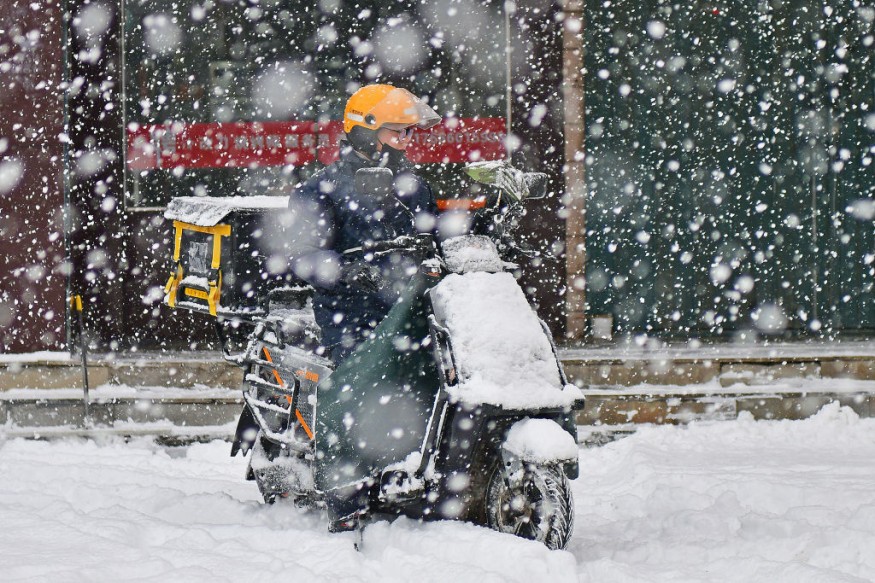Despite the area being rather dry at the time, satellite footage in certain portions of Surrey reveals three sizable, white bands on the ground which is considered a rare phenomenon known as "industrial snowfall." The snow was reported to spread close to industrial sites southeast of Heathrow airport on January 23.
Industrial Snow in UK

Dr. Julian Mayes, an independent meteorological and climate expert who observed the snowstorm and authored the research, claimed that pollution was the "only real explanation" for the snowfall.
Anthropogenic or industrial snowfall can happen when atmospheric moisture condenses around minute pollution particles, creating snowflakes, for example. The perfect combination of low enough temperatures and plenty of atmospheric moisture must exist.
Mayes was made aware of a satellite photograph of eastern Surrey by a colleague on the morning of January 23. The image showed three bands of what appeared to be light snowfall.
Mayes surmised that the industrial snow had been deposited along these tracks due to a light wind that had moved it in a north-northwest direction. He also added additional variables than industrial contamination from ground sources could have influenced events that day.
These include potential ice trails left in the wake of planes flying in and out of the airport, and there is also a chance that nearby reservoir moisture played a role.
He also observed that the snow during that day was incredibly dry, like "desiccated coconut," and, unlike frost, it looked to have been dropped on surfaces from above. This was first confusing, Mayes said, because the area was under a ridge of high pressure and there was little if any precipitation forecast at the time.
The evidence pointed towards something prompting water droplets in the fog to enlarge and freeze, becoming snowflakes. Pollution is likely to have given footholds or nucleation sites, allowing the droplets to become ice crystals. Mayes said that his witnessing the phenomenon was "an absolute chance," considering that the precipitation was so limited.
"If I'd lived a mile and a half away, I probably wouldn't have noticed it," he underscored.
Rare Phenomenon
There was also a small quantity of passing clouds seen in the satellite image. However, Prof. Giles Harrison of the University of Reading's meteorology department said it was "extremely unlikely" that the snow had been generated by clouds in a more common way.
There was no sign of a weather front moving through the area, which would have been necessary for regular snowfall. Harrison added that industrial snowfall was not normally expected, which is why it could startle observers.
The phenomenon has also been documented in the US. One event in 2014 in Amarillo, Texas, was blamed on steam from major power plants, which is suspected to have changed to snow in the chilly February weather.
This uncommon sort of snow will probably grow rarer still in the UK, said Harrison, as average temperatures are likely to continue rising due to global warming.
© 2025 NatureWorldNews.com All rights reserved. Do not reproduce without permission.





